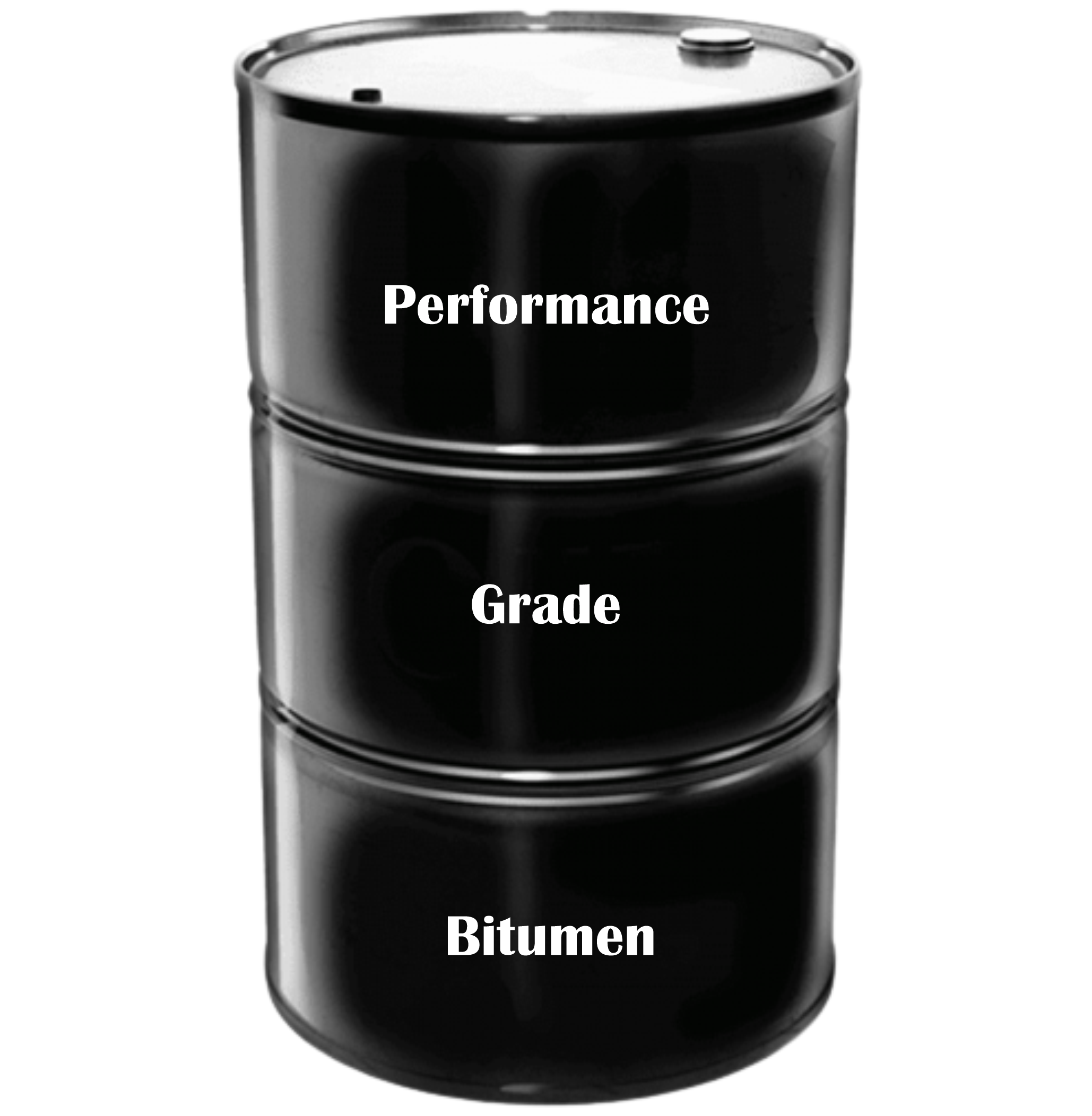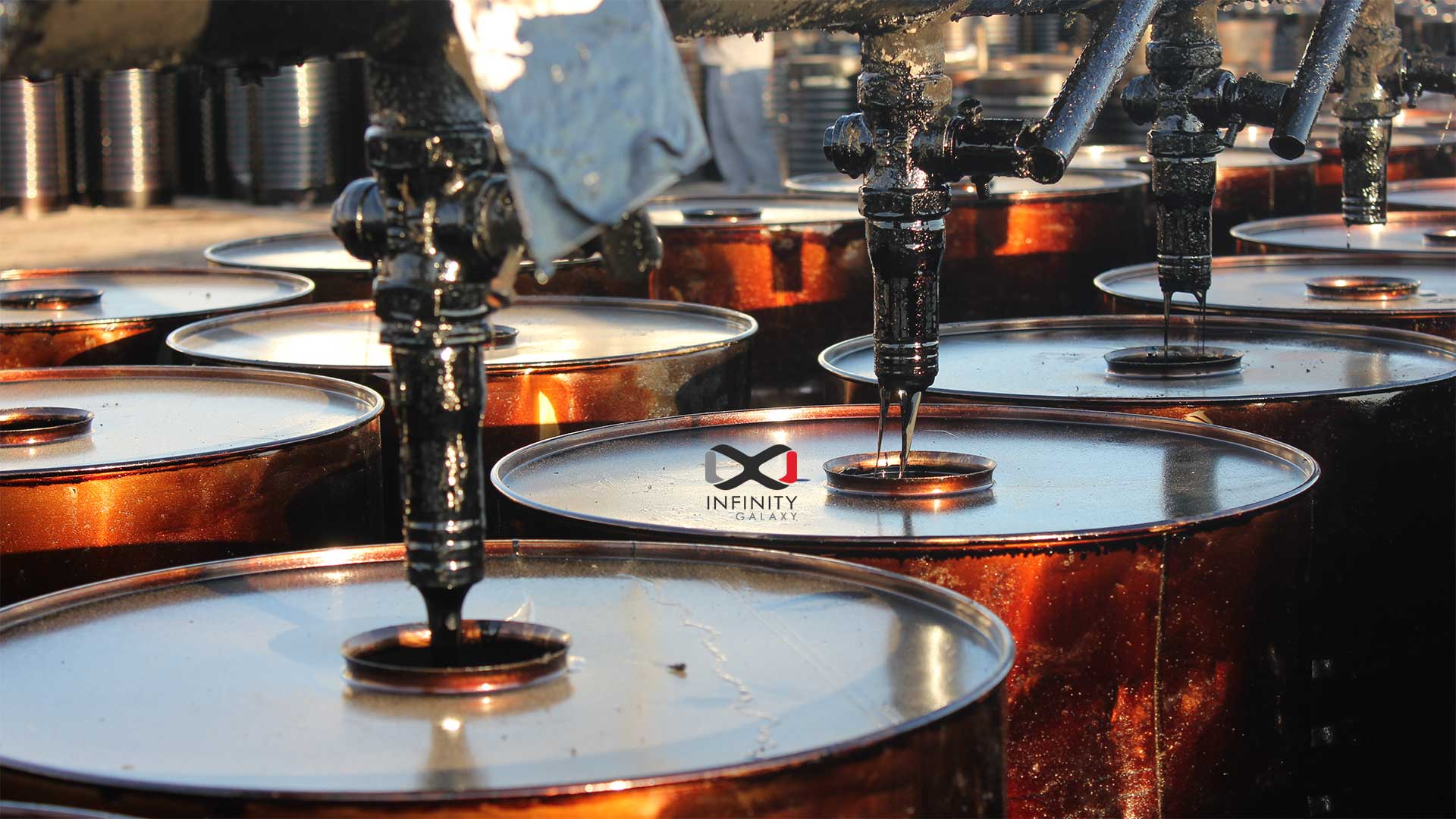Description
Performance Grade (PG) Bitumen represents a modern approach to grading asphalt binders, aimed at improving the quality and longevity of asphalt pavements. It was developed as a response to the limitations of older grading systems like penetration and viscosity. Here’s a different perspective on PG bitumen:
- Innovative Grading Approach:
- PG bitumen is the result of extensive research and development efforts, particularly within the Strategic Highway Research Program (SHRP) in the United States.
- Superpave and Performance Focus:
- The SHRP initiative led to the creation of Superpave, which is designed to promote superior performance in asphalt pavements.
- PG bitumen is a key component of Superpave, with a strong emphasis on performance characteristics.
- Temperature-Based Classification:
- PG bitumen is categorized based on its performance under varying temperature conditions, including extreme heat and cold.
- This classification system ensures that the binder can withstand the specific thermal stresses it will encounter in real-world applications.
- Selecting the Right Binder:
- The primary goal of the PG system is to select the most appropriate asphalt binder for the given environmental conditions and traffic requirements.
- To achieve this, a standardized set of tests is conducted to evaluate the physical properties of the binder at temperatures that align with expected pavement conditions.
- Temperature Calculation Methods:
- Long-Term Pavement Performance (LTPP) provides methods for calculating pavement temperatures based on ambient air temperatures.
- These calculated temperatures guide the selection of PG bitumen by identifying the range within which the binder should perform optimally.
- Addressing Performance Parameters:
- Unlike older grading systems like penetration and viscosity, which offered limited insights into binder performance, Superpave’s PG system introduces new tests and specifications.
- These tests are specifically designed to assess critical performance parameters such as resistance to rutting, fatigue cracking, and thermal cracking.
- Tailored to Conditions of Use:
- PG bitumen selection takes into account the anticipated climate conditions and aging effects that the binder will face.
- By aligning binder properties with real-world conditions, the PG system enhances the durability and performance of asphalt pavements.
- Precision and Completeness:
- The Superpave PG system offers a more comprehensive and precise understanding of how asphalt binder properties correlate with field conditions compared to earlier grading systems.
- Guidance for Selection:
- Detailed guidance on choosing the right PG asphalt binder for specific conditions can be found in the Superpave mix design methodology.
- Overcoming Limitations:
- The PG system effectively addresses the limitations of previous grading methods, offering a more accurate and reliable way to specify asphalt binders for modern pavement construction.
Performance Grade (PG) Bitumen Nomenclature
The nomenclature for Performance Grade (PG) Bitumen is crucial for specifying asphalt binders based on their performance characteristics under varying temperature conditions. Here’s a breakdown of the PG Bitumen nomenclature:
- PG Grade:
- The PG grade is represented by two numbers separated by a hyphen, such as PG 64-XX.
- The first number (PG 64-XX) signifies the high pavement temperature in degrees Celsius at which the asphalt binder is expected to perform well without excessive rutting. This temperature is a critical factor in warm climates where high temperatures can soften asphalt pavements.
- Low-Temperature Grade:
- The second number (PG XX-22) represents the low pavement temperature in degrees Celsius, indicating the asphalt binder’s ability to resist cold temperature-induced cracking and fatigue. This parameter is vital in colder climates where asphalt must remain flexible in frigid conditions.
- Adjustments in Six-Degree Increments:
- All adjustments to the PG grading system are made in increments of six degrees Celsius.
- These adjustments account for variations in traffic conditions, traffic volumes, and other factors to ensure that the asphalt binder is suitable for the specific environmental conditions and loads it will encounter.
- Pavement Temperature vs. Air Temperature:
- It’s important to note that the numbers in the PG grade represent pavement temperatures, not air temperatures.
- The pavement temperatures are typically estimated from air temperatures using an algorithm contained in the Long-Term Pavement Performance (LTPP) Bind program. This ensures that the PG grade accurately reflects the thermal stresses experienced by the asphalt pavement.
- High-Temperature and Low-Temperature Effects:
- The high-temperature number (e.g., PG 64) primarily relates to the asphalt binder’s resistance to rutting, which can occur when the pavement becomes too soft in hot weather.
- The low-temperature number (e.g., PG 22) is associated with the asphalt binder’s ability to withstand cold temperatures and resist cracking, especially during freeze-thaw cycles.
Performance Grading Considerations:
- Stress-Strain Relationships:
- Performance grading aims to incorporate measures that describe how asphalt binders respond to stress and strain under real-world field loading conditions.
- It seeks to provide a more comprehensive understanding of how asphalt performs under the pressures of traffic and environmental factors.
- Pavement Conditions:
- When determining the appropriate performance grade, various pavement conditions must be considered, including:
- Temperature: Both the maximum and minimum pavement temperatures are vital factors in assessing binder performance.
- Traffic Speed: The rate at which vehicles travel on the pavement impacts the wear and tear experienced by the asphalt binder.
- Traffic Volume: The amount of traffic using the pavement affects the level of stress and strain the binder must withstand.
- Pavement Structure: The strength and composition of the pavement structure play a role in how stress and strain are distributed.
- When determining the appropriate performance grade, various pavement conditions must be considered, including:
- Acceptance Limits from Field Performance:
- The development of performance grading standards is informed by practical experience and the observed performance of asphalt binders in the field.
- Acceptance limits are established based on actual performance data to ensure that selected binders meet real-world demands.
Variables Affecting Binder Selection:
- Geographic Area:
- Geographic factors include:
- Air Temperature: The local climate, including temperature ranges, influences binder selection.
- Solar Radiation: Sunlight exposure can impact pavement temperatures and, consequently, binder performance.
- Pavement Temperature: The maximum and minimum pavement temperatures, driven by climate and solar effects, are key considerations.
- Geographic factors include:
- Traffic Conditions:
- Traffic-related variables encompass:
- Traffic Volume: Binders must be chosen based on the expected volume of vehicles using the pavement, whether it’s a high-traffic urban road or a low-traffic rural route.
- Traffic Speed: The speed at which vehicles travel affects the dynamic loads and stresses on the asphalt binder.
- Traffic-related variables encompass:
- Pavement Structure:
- The structural characteristics of the pavement are important factors:
- Pavement Strength: The structural integrity of the pavement, whether it’s robust or susceptible to deformation, impacts binder selection.
- Stress and Strain: Understanding how stress and strain are distributed within the pavement structure guides the choice of an appropriate binder.
- The structural characteristics of the pavement are important factors:
Methods of Selection:
- Base Grade Selection:
- Start by selecting a base grade based on the geographic area’s characteristics:
- Consider the local climate, air temperature, and anticipated pavement temperature ranges.
- Start by selecting a base grade based on the geographic area’s characteristics:
- Adjustments Based on Traffic Conditions:
- Refine the binder selection by making adjustments based on traffic-related factors:
- Take into account traffic speed and volume, which can affect the binder’s performance requirements.
- Refine the binder selection by making adjustments based on traffic-related factors:
Superiorities of Performance Grade (PG) Bitumen:
- Modernized Approach:
- PG Bitumen represents a modern and scientifically advanced approach to asphalt binder grading, moving away from empirical methods based solely on historical experiences.
- It acknowledges that current traffic and climatic conditions are vastly different from the past, requiring a more dynamic and adaptable grading system.
- Incorporating Real Traffic Data:
- Unlike traditional methods that rely on historical data and assumptions, the PG system allows for the consideration of actual traffic volume and vehicle speed.
- This reflects the evolving nature of road use and the need for binders that can withstand varying traffic loads.
- Temperature Range Indication:
- Superpave grading provides a distinct advantage by indicating the working temperature range of the binder.
- It ensures that the binder is suitable for both high and low-temperature conditions, offering a more complete picture of its performance.
- Rate of Load Consideration:
- Bitumen’s behavior is highly sensitive to temperature and the rate of load application.
- The PG system accounts for this sensitivity and considers the rate of load, providing a more accurate assessment of binder performance.
- Variability Across Sources:
- Binders sourced from different petroleum origins may exhibit varying rheological behaviors, even if they share the same penetration or viscosity grade.
- Superpave recognizes this variability and allows for more precise specification.
- Compatibility with Modified Binders:
- Conventional methods are typically limited to unmodified bitumens, while Superpave is designed to accommodate both modified and unmodified binders.
- This flexibility is essential as modified binders offer improved performance characteristics.
- Comprehensive Aging Assessment:
- Superpave addresses both short-term and long-term aging of binders, which is vital for understanding their performance over time.
- Short-term aging is assessed using the rolling thin film oven test (RTFOT), while long-term aging is evaluated with the pressure aging vessel (PAV).
- Distress Mechanism Recognition:
- The PG system recognizes three primary distress mechanisms affecting pavement performance: rutting, fatigue cracking, and thermal cracking.
- It acknowledges the critical role of bitumen in resisting these distresses and tailors binder specifications accordingly.
- Temperature-Dependent Properties:
- Bitumen’s properties vary at different temperatures, impacting its resistance to distress mechanisms.
- The PG system accounts for these variations by assessing bitumen properties at specific temperatures, ensuring that the binder is well-suited to the conditions it will encounter.
Application of Performance Grade (PG) Bitumen for various grades:
PG76-22:
- PG76-22 is commonly used in high-traffic areas where the pavement is subjected to heavy loads and frequent use.
- This grade is a preferred choice for the production of Hot Mix Asphalt (HMA) due to its high-temperature resistance and durability.
- It can also be used for sealing pavement edges and crack sealing, offering longevity and strength to the pavement surface.
PG70-28:
- PG70-28 is suitable for both new construction projects and pavement rehabilitation.
- It finds application in dense-graded and open-graded Hot Mix Asphalt (HMA).
- Like other PG grades, it can be used for sealing pavement edges and crack sealing.
- PG70-28 is a versatile choice, able to withstand a range of environmental conditions.
PG76-28:
- PG76-28 is commonly used in regions with demanding traffic conditions and temperature fluctuations.
- It is a preferred choice for paving in both new construction and pavement rehabilitation projects.
- PG76-28 is suitable for dense-graded and open-graded HMA, offering a balance of high-temperature resistance and flexibility at lower temperatures.
- This grade is also utilized for sealing pavement edges and crack sealing.
PG82-28:
- PG82-28 is a high-performance asphalt binder suitable for use in extreme conditions.
- It is typically employed in regions with very high temperatures and heavy traffic loads.
- PG82-28 is used in both new construction and pavement rehabilitation, particularly for dense-graded and open-graded HMA.
- Like other PG grades, it is applied for sealing pavement edges and crack sealing to enhance pavement longevity.
PG82-34:
- PG82-34 is designed for use in regions with extreme temperature variations and high-altitude roadways.
- It is well-suited for upper elevation road projects and demanding conditions.
- PG82-34 is primarily used in the production of Hot Mix Asphalt (HMA) but can also be employed for sealing pavement edges and crack sealing to ensure durability and performance.
PG88-28:
- PG88-28 is used in regions with moderately high temperatures and traffic demands.
- It is suitable for both new construction and pavement rehabilitation projects.
- This grade is commonly employed in dense-graded and open-graded HMA.
- PG88-28 can also be used for sealing pavement edges and crack sealing to maintain pavement integrity.



Reviews
There are no reviews yet.